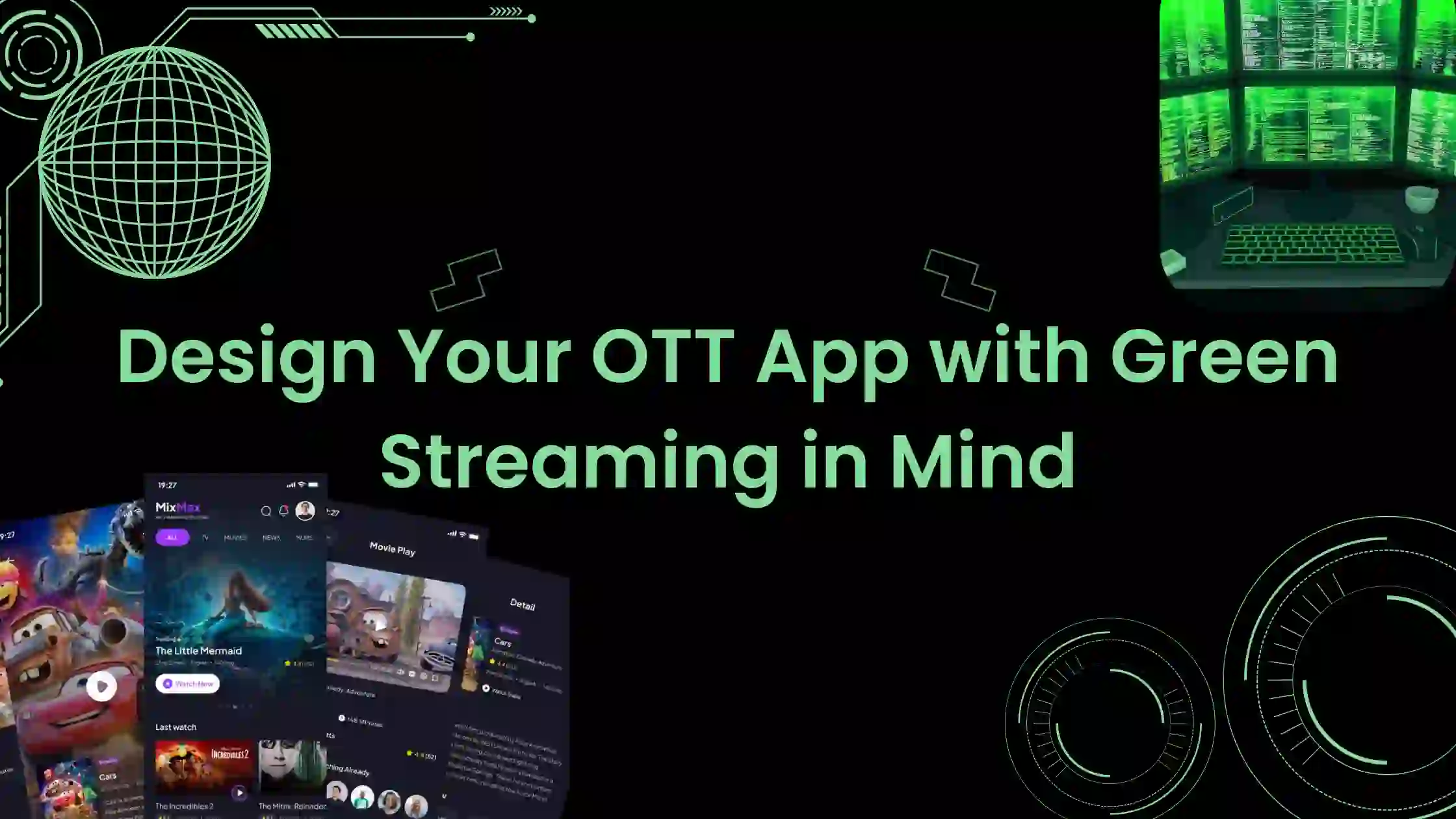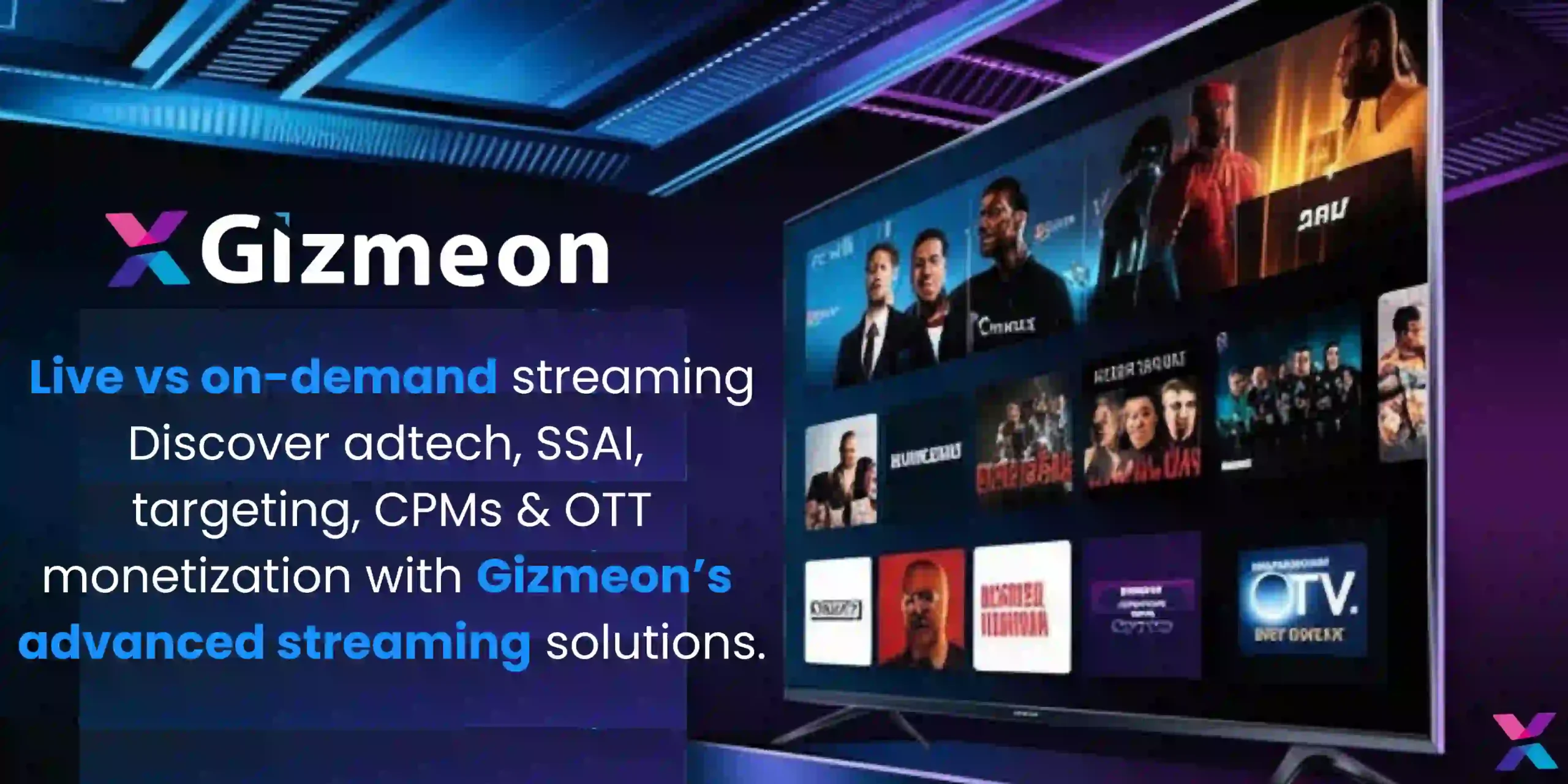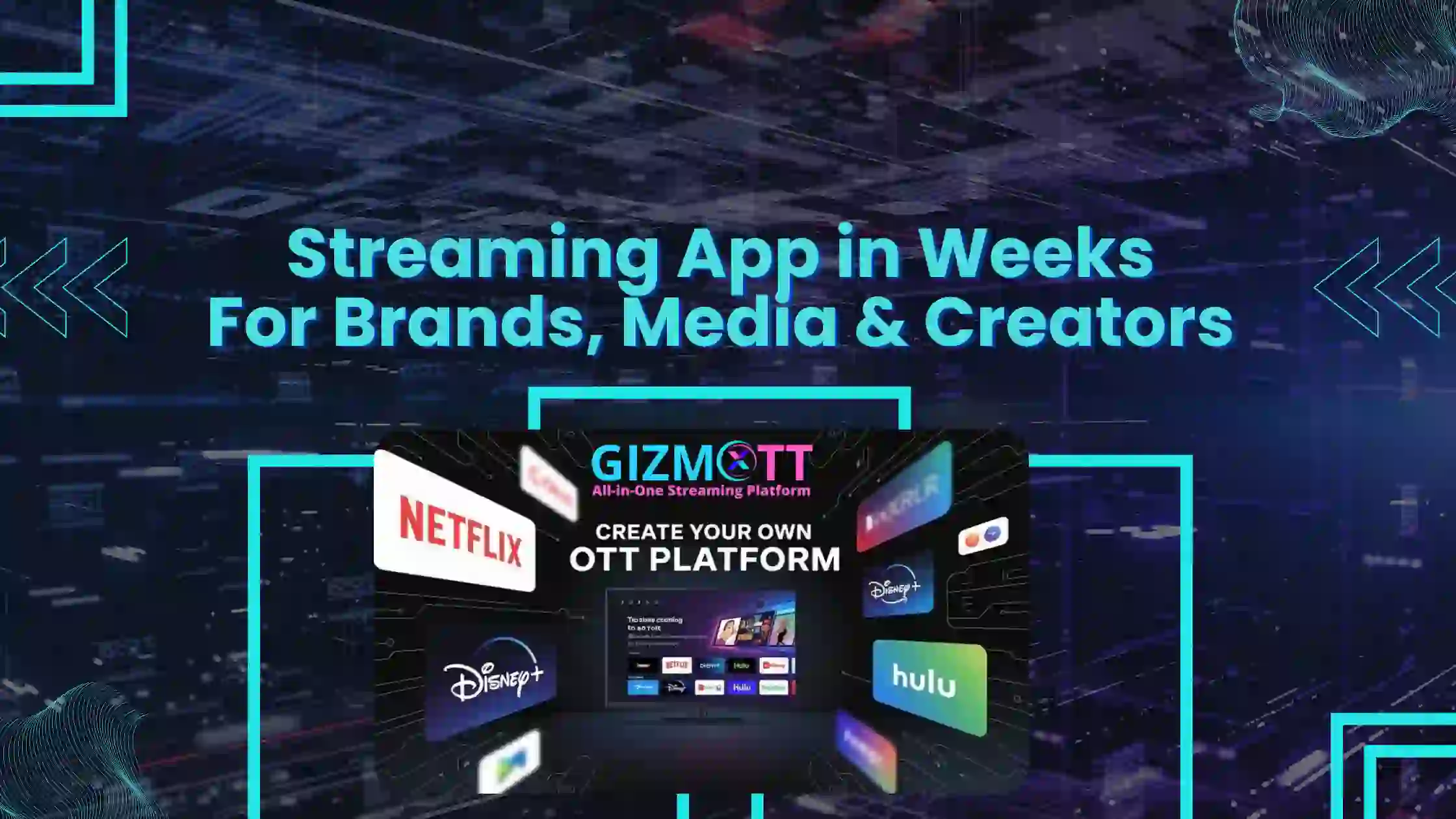Build OTT Apps with Streaming Sustainability 
Sustainable streaming is becoming a must for creators, platforms, and users who care about the climate. This guide explains sustainable streaming best practices, eco-friendly streaming design strategies, and how to build a sustainable OTT app from architecture to UX. If you want a sustainable OTT app that reduces energy use, lowers the carbon footprint of streaming, and attracts climate-conscious viewers, read on.
What is sustainable streaming and why it matters
Sustainable streaming means designing, building, and operating video services with the environment in mind. Sustainable streaming reduces data transfer, optimizes encoding, and chooses green hosting and efficient CDNs. For creators and platforms, sustainable streaming lowers costs and aligns brands with audience values about sustainability in streaming.
Green streaming: reduce the carbon footprint of streaming
Green streaming practices help cut emissions at scale. Use adaptive bitrate streaming, cache at the edge, and enable smarter autoplay policies. Green streaming is also about measuring the carbon footprint of streaming and setting targets for eco-friendly streaming improvements.
Key steps to build eco-friendly OTT apps (sustainable streaming checklist)
- Choose renewable-powered hosting and carbon-neutral data centers. This single choice makes sustainable streaming achievable.
- Optimize video encoding and use AV1 or HEVC to reduce bitrates without losing quality — a core tactic for sustainable streaming.
- Implement adaptive bitrate and chunked delivery to avoid unnecessary data transfer and support eco-friendly streaming.
- Use efficient CDNs and edge caching to minimize long-haul data transmission and improve sustainable streaming performance.
- Offer offline downloads and lower-resolution alternatives so users can choose an eco-friendly streaming mode.
- Add analytics that track energy and data usage to measure the carbon footprint of streaming and inform sustainable streaming goals.
Energy efficient streaming and sustainable OTT app architecture
Design your sustainable OTT app architecture with microservices, serverless functions, and lazy-loading to reduce compute waste. Energy efficient streaming is achieved by reducing background processes, optimizing client-side playback, and batching requests. For many platforms, energy efficient streaming translates directly into lower operating costs and improved sustainability in streaming metrics.
 UX and product design for eco-friendly streaming
UX and product design for eco-friendly streaming
Human-centred design promotes choices that reduce impact. Make eco-friendly streaming options obvious: default to efficient bitrates, add an “eco-mode,” and use clear labels about the carbon footprint of streaming. UX nudges for sustainable streaming help users make better choices without sacrificing experience.
Measurement: estimate the carbon footprint of streaming now and in the future
Estimating emissions helps prioritize change. Current estimates put the carbon footprint of streaming at measurable grams of CO2 per hour; by applying sustainable streaming best practices, platforms can forecast reductions by tens of millions of kilograms annually as adoption grows. Predicting future impact, conservative models suggest that broad sustainable streaming adoption could cut platform emissions by 20-40% over the next five years, while aggressive optimization could achieve even more.
Content delivery and CDN strategies for green streaming
Optimize CDN selection and regional edge locations to minimize transmission distance. Use multicast where possible, and cache popular content aggressively. These content delivery choices are core to green streaming and sustainable streaming goals.
Sustainable video production and encoding for eco-friendly streaming
Produce with sustainability in mind: reduce on-set waste, use efficient editing pipelines, and compress master files responsibly. Smart encoding workflows and sustainable streaming-aware toolchains cut the environmental cost of both content creation and distribution.
The business case: why sustainable streaming is smart for brands
Sustainable streaming attracts eco-conscious subscribers, reduces hosting costs, and improves brand reputation. Companies that adopt sustainable streaming can highlight reductions in their sustainability reports and marketing, giving them a competitive edge.
Gizmeon and sustainable OTT features
Gizmeon helps creators launch sustainable OTT apps with features that support sustainable streaming. Gizmeon offers adaptive bitrate streaming, efficient transcoding pipelines, edge CDN integration, offline download options, and analytics for the carbon footprint of streaming. By using Gizmeon’s platform, brands can implement eco-friendly streaming practices quickly and measure their sustainable streaming progress.
Practical checklist and quick wins for sustainable streaming now
If you want quick, measurable wins in sustainable streaming, start with this practical checklist. Sustainable streaming begins with infrastructure: pick a carbon-aware host and region. Sustainable streaming requires efficient encoding—transcode with modern codecs and automate bitrate ladders. Sustainable streaming benefits from analytics: track data transfer, playback hours, and estimate carbon intensity per stream. Sustainable streaming also needs UX nudges—offer an eco-mode toggle and clearer streaming…
These quick wins are low friction and make a big difference. Use Gizmeon’s analytics to report progress, and celebrate emissions avoided as a business KPI. Pair these operational changes with content strategies—shorter formats, prefetching, and smart caching—to reduce total bytes streamed while preserving audience experience.
Looking ahead: estimates and impact of sustainable streaming
Adopting sustainable streaming across platforms is more than ethics — it’s measurable impact. Predictive models show sustainable streaming practices can scale to save millions of kilograms of CO2 annually for mid-sized services, and larger platforms could cut emissions even further. Plan roadmaps that prioritize sustainable streaming milestones and report them publicly.
Start your sustainable roadmap today — small steps add up.
Measure, iterate, and scale with transparency to build trust. Act now.




